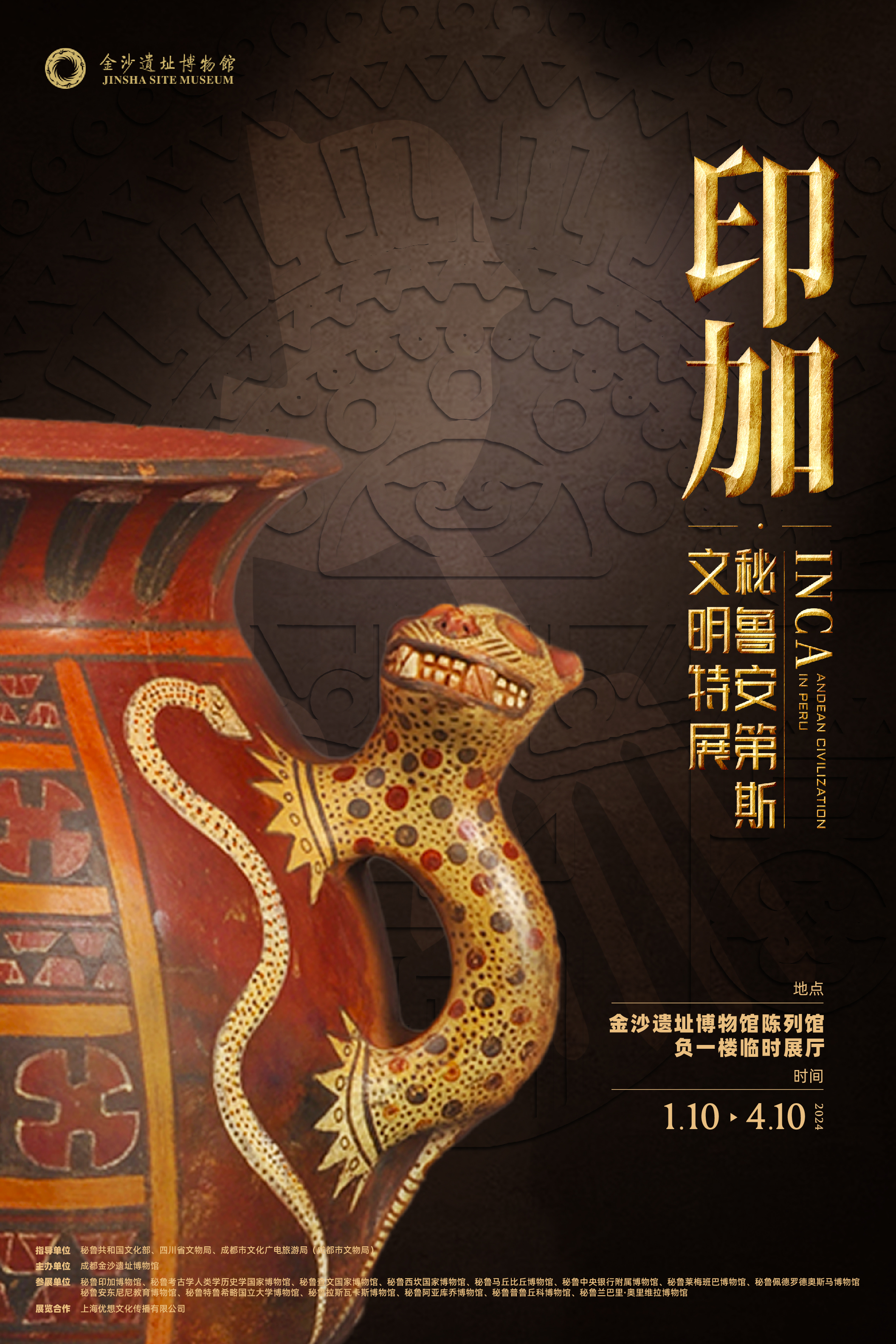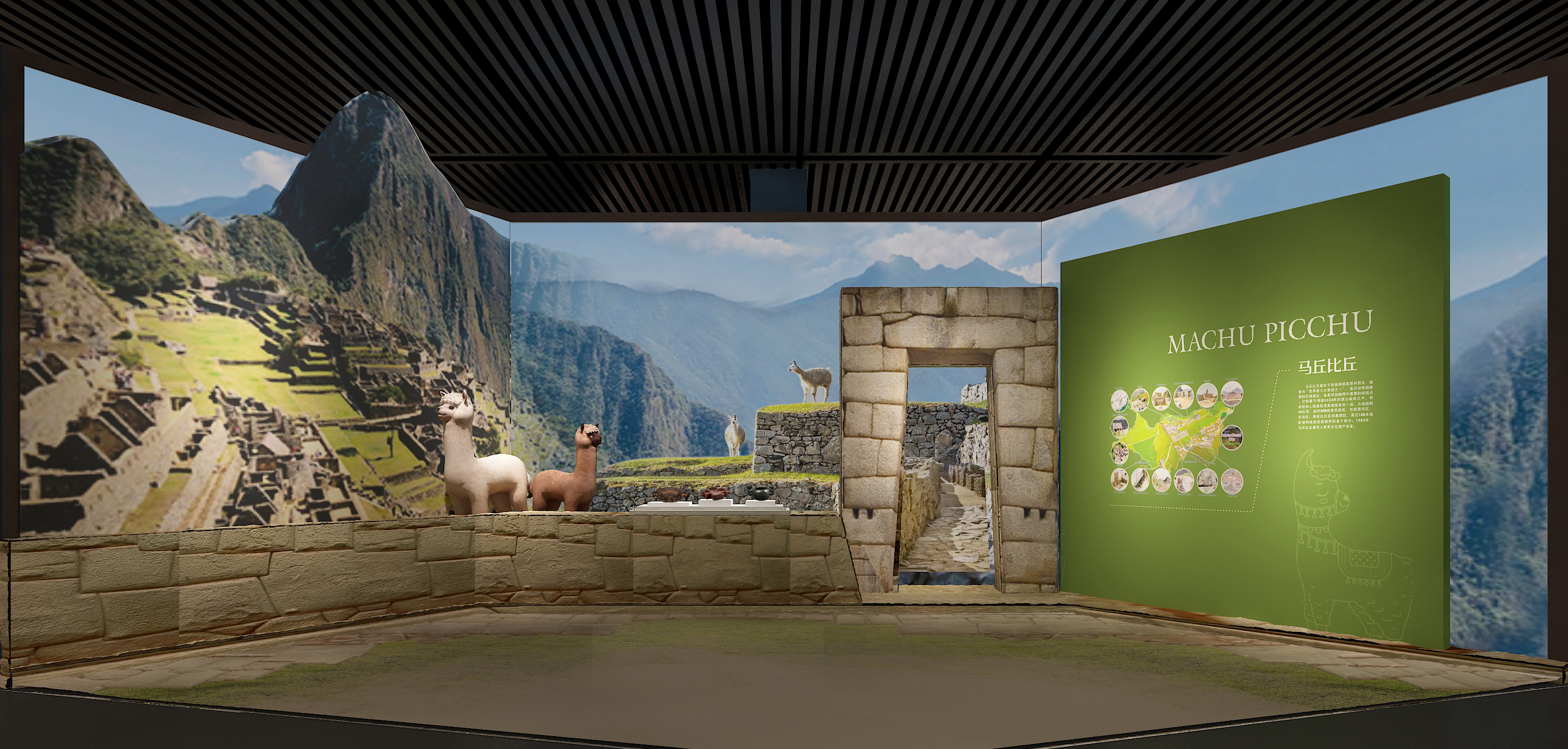New Year's Exhibition at Jinsha Site Museum: Searching for the Lost "Land of Gold" in Jinsha
Release Time: 2024-04-03
"Inca: Peruvian Andean Civilization Special Exhibition" will open in Jinsha Site Museum on January 10th. The exhibition brings together the collections of 14 museums in Peru, including the National Museum of Peruvian Archaeology, Anthropology and History and the Inca Museum, and selects 168 pieces/sets of precious exhibits reflecting the Inca Empire and the Andean civilization, which are astonishing in terms of historical, scientific and artistic values.

Search for the Root of the Mysterious Inca Empire
When mentioning Peru, people always think of the mysterious golden empire—Inca, but long before the rise of the Inca, a rich and diverse civilization had already flourished in the Andes. As one of the representatives of the ancient civilization of the Americas, the Incas left behind a large number of world-famous historical and cultural relics, showcasing their extraordinary wisdom of the Incas in city construction, agricultural production, astronomy and ephemeris.
Jointly organized by the Jinsha Site Museum, the National Museum of Archaeology, Anthropology and History of Peru, the Inca Museum and other 14 museums in Peru, the exhibition, with 168 pieces/sets of exhibits, explores the history, society, art, and cultural heritage of the Inca Empire. Through these remarkable artifacts, visitors will gain a deeper understanding of the rise and fall of the Inca civilization, as well as the broader context of Andean civilization.
The Shared Beliefs of Sun Worship
Like the ancient Shu people, the Incas also worship the sun. The most important deity to the Incas is the Sun God Inti, who was believed to rule over the universe. The common belief in the sun also gives rise to a similar gold cult in both places. Jinsha site has now unearthed more than 300 pieces of gold artifacts, all of which played an important role in the ritual activities. In the Inca culture, gold was also used to make decorations, tableware, plates and ceremonial items for royals.
During the exhibition, visitors can experience the grandeur of the Inca Empire in an immersive way through a variety of interesting interactive experiences, digital dynamics and light and shadow art installations, learn about the harmony in diversity between the ancient Shu people and the Incas, and feel cultural exchange.

Witness the Re-exchange of Two Civilizations
For the Incas, the capital city Cusco is located at the center of the universe, a hub where cultures intertwined. Although the empire did not develop a well-formed script and had to rely on knotted ropes to record history, communication was never cut off.
The discovery of Jinsha Site not only found the origin of Chengdu, but also proved the first leapfrog in its history. Over the past five years, the Jinsha Site Museum's "World Civilizations" serial exhibitions have attracted nearly two million visitors.
The exhibition will be the most farthest-reaching exhibition ever organized by the Jinsha Site Museum, and the one with the largest number of participating museums overseas. The exhibition will run from January 10th to April 10th, 2024. During the exhibition, the Jinsha Site Museum will hold a variety of activities and lectures, offering visitors a cultural feast.






